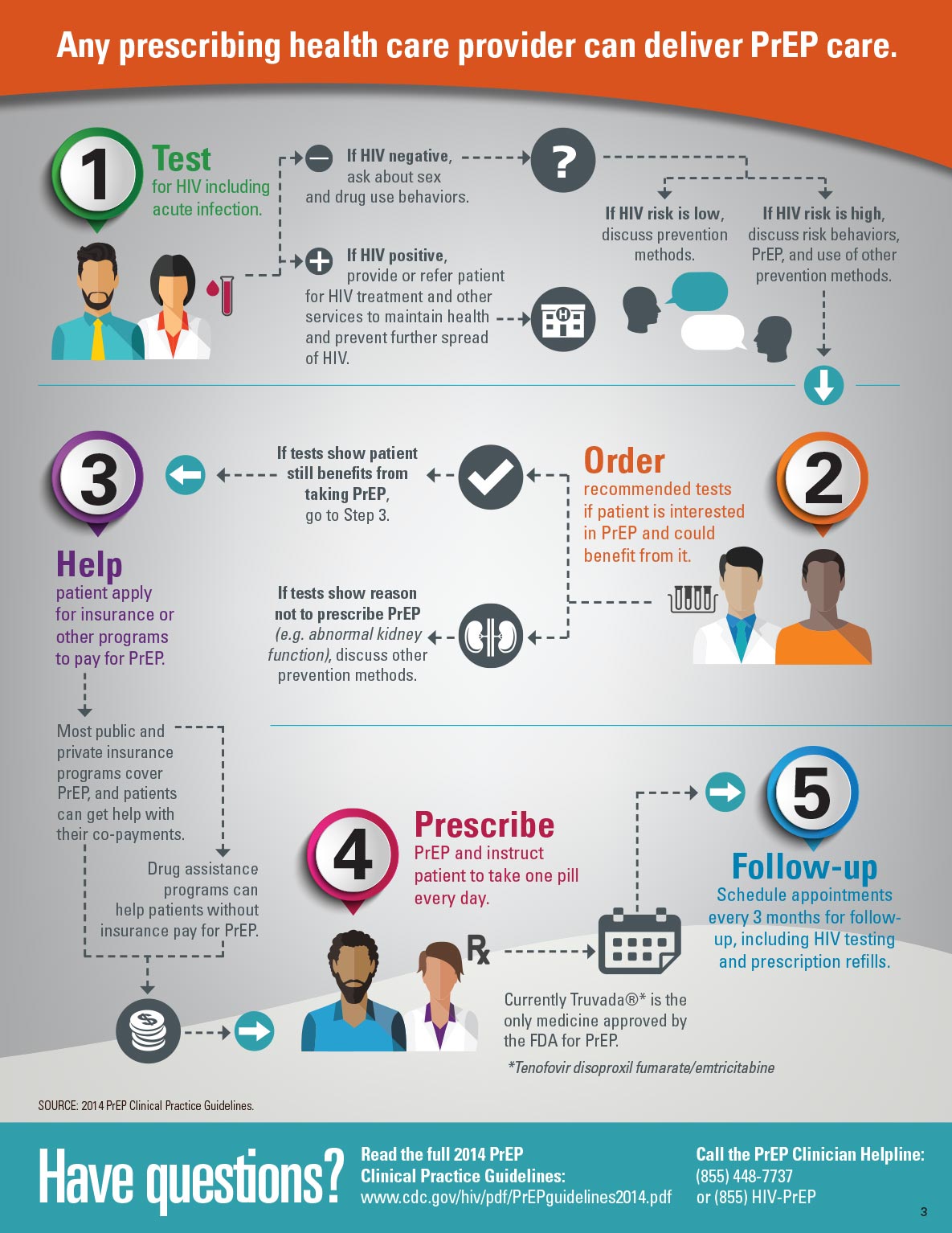Vital Signs: Daily Pill Can Prevent HIV Infographics
Vital Signs: Daily Pill Can Prevent HIV Infographics
Reaching people who could benefit from PrEP

Increased use of Preexposure prophylaxis (PrEP).
A focused effort by New York State to increase PrEP uptake started in June, 2014 and included:
- Provider Training
- Raising Awareness
- Ensuring Medicaid Coverage
Number of New York State Medicate beneficiaries receiving PrEP. 2012-2013: 259. 2013-2014:303. 2014-2015:1,330.
SOURCE: NYS Medicaid Data Warehouse (based on Medicaid data loaded through July 2015)

Flow chart shows how any prescribing health care provider can provide Preexposure prophylaxis (PrEP) care.
- Test for HIV including acute infection.
- If HIV positive, provide or refer patient for HIV treatment and other services to maintain health and prevent further spread of HIV.
- If HIV negative, ask about sex and drug use behaviors.
- If HIV risk is low, discuss prevention methods.
- If HIV risk is high, discuss risk behaviors, PrEP, and use of other prevention methods.
- Order recommended tests if patient is interested in PrEP and could benefit from it.
- If tests show reason not to prescribe PrEP (e.g. abnormal kidney function), discuss other prevention methods.
- If tests show patient still benefits from taking PrEP, go to Step 3.
- Help patient apply for insurance or other programs to pay for PrEP.
- Most public and private insurance programs cover PrEP, and patients can get help with their co-payments.
- Drug assistance programs can help patients without insurance pay for PrEP.
- Prescribe
-
PrEP and instruct patient to take one pill every day.
Currently Truvada®* is the only medicine approved by the FDA for PrEP.
*Tenofovir disoproxil fumarate/emtricitabine
-
- Follow-up
- Schedule appointments every 3 months for follow-up, including HIV testing and prescription refills.
Have Questions?
PrEP Clinician Helpline: (855) 448-7737 or (855) HIV-PrEP
2014 PrEP Clinical Practice Guidelines [867KB]
SOURCE: 2014 PrEP Clinical Practice Guidelines
